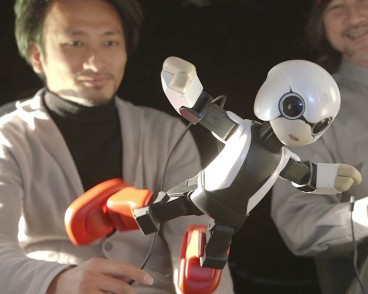Our friends are already electric, but is the current arrangement just prelude?
When you consider the place in our pockets–in our hearts–for our smartphones with all their endless content, is it any stretch to see robots as our pals? The alliance may start in space, but it will eventually touch down. Even if the robots can’t truly see us, they can watch us, and such a simulacrum may bring satisfaction. From Anthony Cuthbertson at IBM Times:
The Kibo Robot Project, set up in Japan around three years ago, is hoping that its robots can be used to better understand the relationship between robots and humans, with the eventual aim of providing complete companions for humans living increasingly isolated lives. …
The Kibo Robot Project originally formed from a collaboration between the University of Tokyo, Toyota, Robo Garage and Dentsu.
As a result, two identical humanoid robots – Kirobo and Mirata – were developed, each featuring voice and facial recognition, as well as natural language processing to allow them to understand and communicate with humans.
After a period of tests and experiments, one of the robots was sent up to join Japanese astronaut Wakata Koichi aboard the ISS.
While aboard the ISS, the robot astronaut was able to “observe” certain operations, however its functionality meant that its role as a companion was limited to short conversations with Wakata. As artificial intelligence technology advances it is hoped that robots such as these could be used on more long-term space missions.
“A robot would be utilised more in long-distance missions like on a journey to Mars,” Nishijima said. “It would be used to support the astronauts because sometimes a loss of signal occurs, and in that case the astronaut needs to have a companion or friend to talk to.”•
Tags: Anthony Cuthbertson

